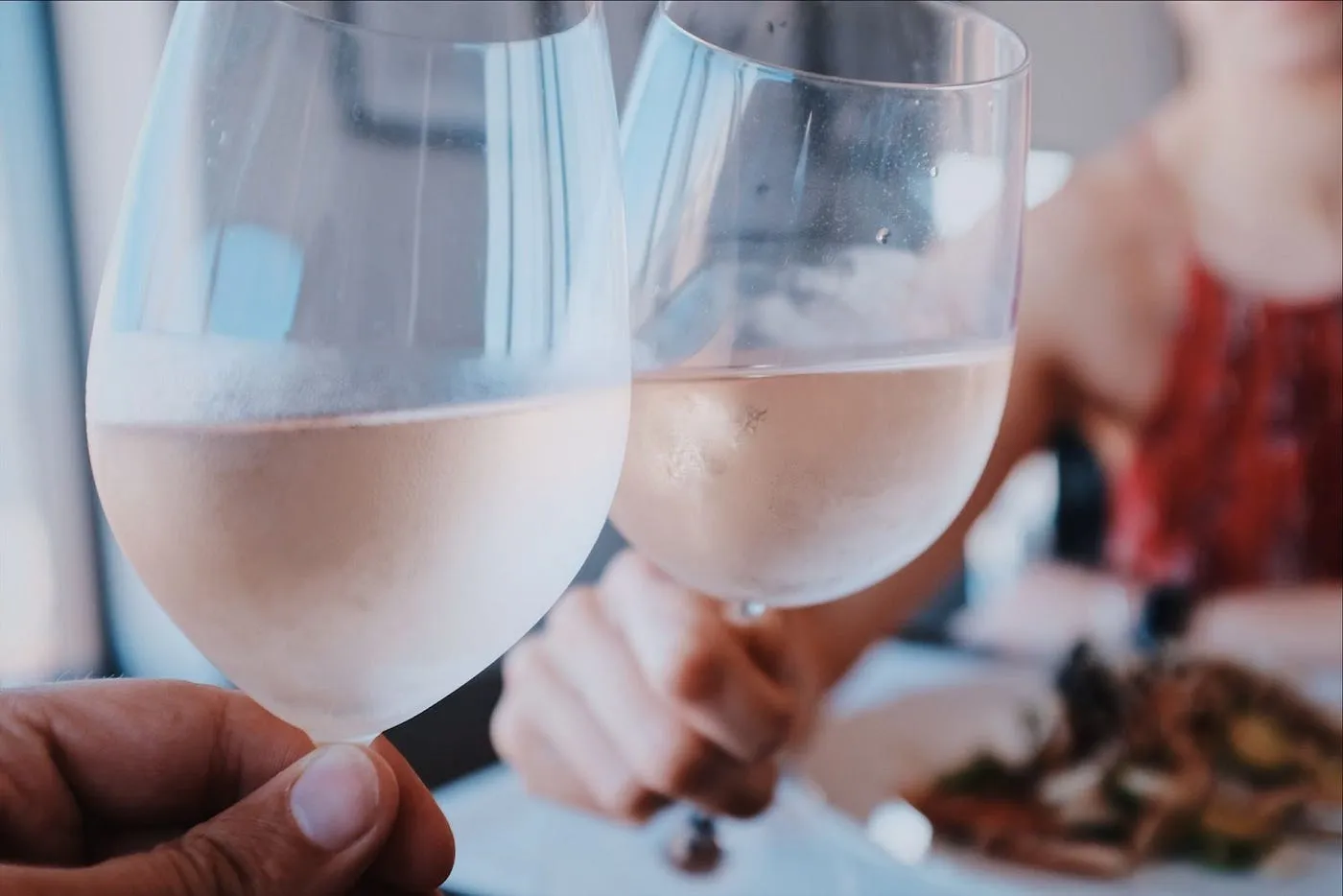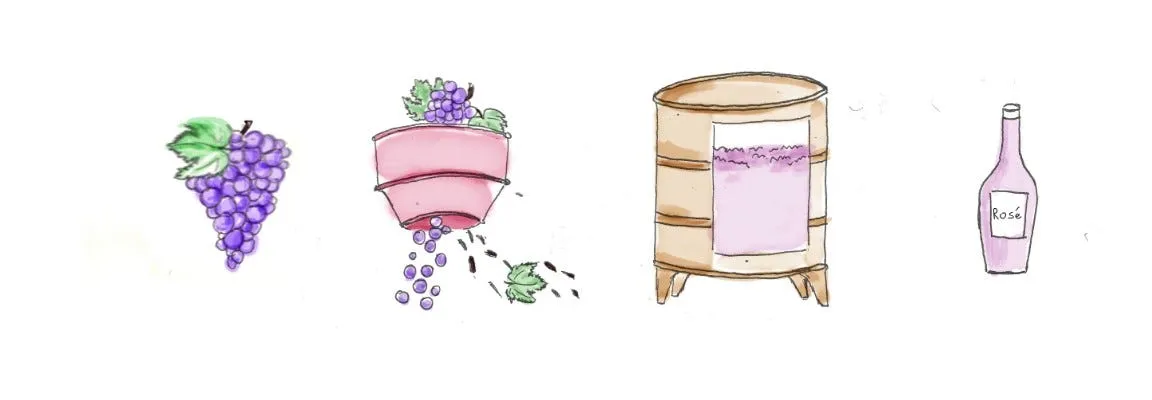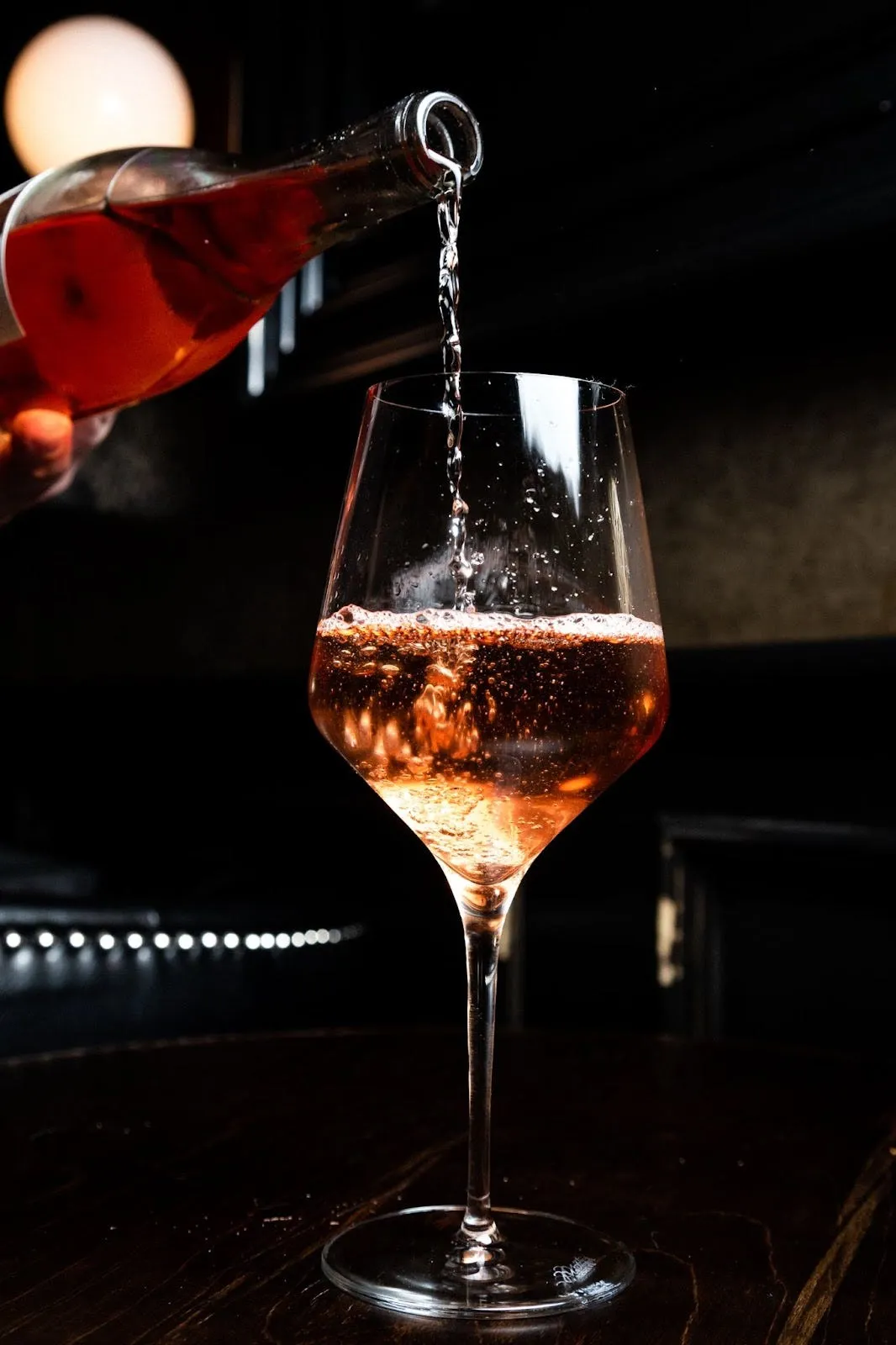- Wine Color/Type
- Top Occasions
- Unique Wines
- Surprise Me!
Rosé Wine: A Delightful Fusion of Red Grapes
In the world of wine, rosé stands out as a charming and versatile option that appeals to both wine connoisseurs and casual drinkers alike. With its alluring pink hue and refreshing taste, rosé has become a beverage of choice for warm summer days, social gatherings, and celebrations.
Fresh, fruity rosé wines. (Vincenzo Landino, unsplash.com)
Born from dark grapes
The first thing that sets rosé wine apart is the art of winemaking. Despite its pink color, rosé is made from red grapes, which can sometimes be blended with a few white grapes. Winemakers use a process that borrows elements from red winemaking techniques to create this delightful wine. The winemaking process for rosé can be similar to that of red wines, where the grape skins are left in contact with the juice throughout fermentation to extract color, tannins, and flavors. However, rosé wines only undergo a short skin contact period, ranging from minutes to a few hours. This gentle yet purposeful approach gives rosé its distinct and refreshing taste that appeals to a wide range of palates.
Duration of skin contact
The key to achieving the beautiful pink hue of rosé lies in the limited contact between grape skins and the juice. After the red grapes are harvested, they are gently crushed, and the skins are left in contact with the juice for a short period, typically upto a few hours. The exact duration of skin contact depends on the desired color and flavor profile the winemaker aims to achieve. The longer the skins are in contact with the must, the darker and more intense the rosé will be. To maximize the fruitiness, the wines are often fermented in cool conditions. Oxygen is commonly excluded to promote the juicy raspberry, cherry, and sometimes citric notes.
How rosé is made (Credit: drawing by Krystal Wen)
Sparkling rosé wines and the art of blending
Another intriguing aspect of rosé winemaking is blending. While many rosé wines are crafted using the skin contact method, some winemakers opt for blending. In this approach, small amounts of red wine are added to white wine, creating a rosé blend with a consistent flavor profile year after year. This method is commonly applied to producing Champagne but is also used for international still wines. Blending offers winemakers more control over the final wine and allows them to maintain a signature style.
Rosé wines come in many styles. (Kevin Kelly, unsplash.com)
Use the VinoVoss platform to discover exciting rose wines!
Peter Douglas
Latest articles



